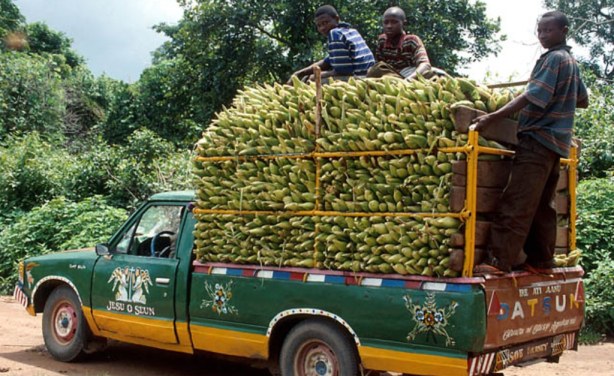
Ghana is currently facing inflation at an 18-year high as food prices and transport cost surge. Inflation is quoted at 27.6 per cent.
Ironically, the Minister of Food and Agriculture is reported in the media as saying foodstuffs are left to rot in some parts of the country due to poor roads. Also, there are yearly reports of food glut across major food-producing centres in the country while other places report shortage. Seasonal (temporal food glut and shortages) uneven distribution of food and general agricultural commodities is also a common occurrence.
In instances where transportation is made available, most of them are not appropriate. For example, tomatoes and other perishables are expected to be transported in cold chain (transportation of food at preset low temperature to guarantee the freshness of food during transportation to reduce loss). There are several instances that tomatoes and other perishables are moved from where they are produced and by the time they reach where they are needed, a considerable portion is lost.
Policy gaps
The country can only be reaping the results of a historic policy failure to connect increased production with efficient marketing. It is evident that over the years, Ghana’s agricultural sector policies and programme interventions have largely focused on increasing production at the farm level without much attention on how the products resulting from the increased production will be efficiently distributed spatially (across space) and temporally (across time/seasons).
End results are wasted production outputs, poorer smallholder farmers and a nation of abundance production struggling for food at an affordable cost to feed its population.
So how can we match the level of production with consumption across time and space? The answer is simple, connect farm-level production interventions with marketing-level distribution interventions such as a Ghana Agricultural Commodities Transport Services (Ghana-ACTs).
Currently there is no dedicated public sector transport arrangement for the transportation of agricultural commodities from production centres to other parts of the country. The distribution of the produce is solely left in the hands of private market players who make their own arrangement to transport food from the farm gate to the end consumer markets. With so many market intermediaries and individual transport arrangements, the products get to the final consumer market at higher per unit market cost which is passed on to the final consumer.
Private sector involvement
With the Ghana-ACTs, the government can partner with the private sector to establish and operate dedicated agricultural products transport services at all regional food production epicentres for the real-time transportation of agricultural commodities across the country.
The Ghana-ACTs will have a farm gate link to evacuate the product from the farm gates/rural outlets to dedicated centres for inter-regional distribution.
The Ghana-ACTs should be structured to have the right transportation system that ensures that food is moved from where it is to where it is needed. It calls for not only having the facilities, but the appropriate facilities that ensure that the food is safe.
The government can make use of the already-built buffer stock storage facilities across the country as centre for the aggregation and transits for the commodities. The facilities can be expanded and equipped with drying equipment for cereal drying and cool storage for perishable commodities.
A well-functioning ACT will not only ensure timely and easy evacuation of agricultural commodities from the farm level but will also reduce the per unit transport cost to consumer markets. It will reduce post-harvest losses significantly and give better farm gate prices to producers. Ghana-ACTs will consolidate the production side gains and stabilise food prices and distribution across space and time.
Source: Zuobog Philip Neri
The writer is an Agriculture and Food Security Consultant.

